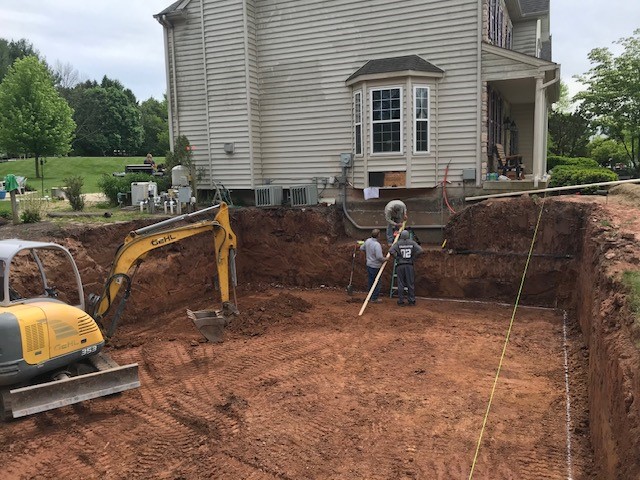In-Depth Exploration: The Scientific Research Behind Superior Excavation Practices
The world of excavation practices is a domain where scientific research links with craftsmanship to discover the enigmas concealed below the earth's surface area. From old hand tools to modern-day hydraulic excavators, the advancement of excavation techniques has been a testament to human ingenuity and technological innovations. What really establishes premium excavation techniques apart is a deep understanding of geological concepts, paired with the utilization of advanced tools and methods. By checking out the science behind these practices, we can uncover the secrets that exist beneath our feet and value the precision and expertise that enter into every dig.
Development of Excavation Techniques
Throughout background, the development of excavation strategies has played a critical function beforehand building methods and archaeological discoveries. From the fundamental tools made use of by our ancestors to the innovative equipment utilized in modern-day times, the development of excavation techniques has actually dramatically changed just how we approach various tasks.
In ancient times, manual work with standard tools such as pickaxes, shovels, and wheelbarrows was the primary approach of excavation. This labor-intensive procedure limited the depth and scope of excavations, usually leading to slow development and limited access to particular sites. As worlds progressed, so did the tools and methods made use of for excavation.
The Industrial Revolution marked a turning point in excavation methods with the intro of steam-powered equipment. In modern times, modern technology plays a pivotal role in excavation, with improvements like GPS systems, drones, and 3D scanning improving precision and performance in the field.
Role of Technology in Excavation

The integration of cutting-edge modern technology has actually fundamentally revolutionized the area of excavation, improving precision and performance to extraordinary levels. One of the essential technological innovations that has considerably affected excavation practices is the utilization of general practitioner systems. These systems enable exact mapping of excavation websites, enabling operators to properly situate underground energies and frameworks. Additionally, using telematics in excavation devices has made it possible for real-time tracking of device efficiency, causing proactive upkeep and enhanced functional performance.
Furthermore, the development of 3D modeling and simulation software has streamlined the preparation procedure for excavation projects. Designers and drivers can currently envision the entire excavation process prior to beginning, enhancing and recognizing potential challenges process. Along with this, the implementation of drones in excavation activities has assisted in aerial surveys, volumetric dimensions, and website evaluations with unparalleled rate and accuracy.
Geological Concepts in Excavation
An understanding of geological concepts is important for making sure the architectural honesty and security of excavation sites. Geological factors play a critical role in determining the usefulness and safety and security of excavation projects (dump truck companies in ohio). One vital geological concept to take into consideration is the sort of dirt or rock existing at the website. Different soil types, such as clay, gravel, link or sand, have differing degrees of security and need various excavation methods. As an example, cohesive soils like clay might call for added support to avoid collapses, while sandy soils might be susceptible to erosion throughout excavation.
In addition, the geological framework of the area, including mistakes, cracks, and rock developments, should be meticulously examined to recognize potential dangers and difficulties. Excavating near geological fault or unsteady rock formations can bring about instability and prospective dangers. By carrying out complete geological studies and evaluation, designers and excavators can develop approaches to alleviate threats and make certain the successful conclusion of excavation projects. Inevitably, including geological principles into excavation methods is crucial for attaining secure, effective, and lasting results.

Latest Tools for Excavation
In the realm of excavation techniques, contemporary innovations in devices have reinvented the efficiency and precision of excavation processes. These drones can provide detailed airborne surveys of excavation websites, supplying real-time data on topography and potential hazards.
One more cutting-edge device gaining popularity is the execution of 3D printing modern technology for producing custom excavation devices. This enables the production of specialized devices that are tailored to the particular needs of a project, increasing effectiveness and lowering downtime.
Moreover, advancements in products science have actually caused the development of more powerful and extra sturdy excavation devices. septic ohio. Tungsten carbide-tipped excavator attachments, as an example, deal remarkable performance in difficult ground problems, improving performance on-site
Science's Effect on Excavation Practices

Additionally, clinical study on soil auto mechanics and geotechnical design has supplied beneficial insights into dirt behavior, allowing excavation experts to make enlightened decisions pertaining to excavation techniques and dirt stablizing techniques. Generally, scientific research proceeds to drive development and enhancement in excavation techniques, making excavation tasks more effective, economical, and lasting.

Conclusion
To conclude, the development of excavation methods has been significantly influenced by advancements in innovation and a deeper understanding of geological principles. The current devices and tools made use of in excavation have actually boosted efficiency sites and precision in the field. The application of clinical expertise has significantly boosted excavation techniques, causing much more lasting and reliable techniques for excavating various kinds of products.
In the realm of excavation methods, modern innovations in tools have actually changed the performance and accuracy of excavation procedures. By leveraging clinical principles, the excavation market has been able to significantly enhance effectiveness, precision, and safety in excavation processes. GPR permits excavation groups to non-invasively check and map subsurface structures, energies, and possible dangers, enabling them to plan excavation jobs with greater accuracy and lowered danger of mishaps.
Additionally, clinical research on dirt technicians and geotechnical design has actually offered important understandings into soil actions, allowing excavation professionals to make enlightened choices concerning excavation approaches and dirt stablizing methods. Overall, scientific research continues to drive development and improvement in excavation techniques, making excavation jobs much more efficient, cost-efficient, and sustainable.